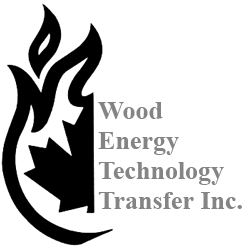Do you have smoke coming in when you use your wood-burning device?
So how do you stop smoke from coming inside when burning wood? Well, there could be several reasons why your wood-burning chimney is smoking excessively. It could be as simple as a downdraft of cold air (easy fix) or it could mean there is something wrong that needs to be addressed. That’s why it’s crucial to have your chimney inspected and cleaned regularly by a professional chimney sweep to remove any blockages, creosote buildup, or other issues that could cause smoking. Also, ensure you are using your fireplace or wood-burning stove correctly, following manufacturer instructions for proper operation and maintenance.
Draft issues with a wood-burning stove can be caused by various factors. There could be several reasons why your wood-burning chimney is smoking excessively.
Here are some common reasons why you might be experiencing draft problems:
- Poor Draft: Insufficient draft is a common reason for smoke backing up into the room. Accordingly, the chimney may not be drawing the smoke up and out due to improper sizing, blockages, or inadequate height.
- Cold Chimney: If the chimney is very cold, especially when starting a fire, it might not create an optimal draft until it warms up. Preheating the flue with a rolled-up newspaper or using kindling to warm the chimney can help.
- Airflow Blockages: Debris, bird nests or creosote buildup in the chimney can impede proper airflow, causing smoke to accumulate inside your home.
- Moist or unseasoned wood: Burning wet or unseasoned wood can produce more smoke and less heat, leading to insufficient draft. Burning wet or unseasoned wood can produce more smoke because the moisture content hasn’t dried out sufficiently. Using properly seasoned firewood with a moisture content of around 20% or less will unquestionably ensure efficient burning.
- Closed Damper or Flue: Forgetting to open the damper fully before starting a fire can cause smoke to back up into the room. Checking the damper before lighting the fire is always the first thing to remember.
- Wind Direction and Patterns: Occasionally, wind direction or gusts can interfere with the chimney’s draft, causing the smoke to blow back down.
- Improper Ventilation: In tightly sealed homes, especially those with high-efficiency windows and insulation, there might not be enough air entering the room to replace the air that the fire is using, leading to poor ventilation and smoke issues.
- Chimney Design: Sometimes, the design of the chimney might not be optimal for the type of fire you’re burning. This can also be the cause of smoke problems
- Improperly sized flue: A flue that is too large or too small for the stove can cause draft issues. If it’s too large, it may struggle to maintain a consistent draft, while if it’s too small, it can create excessive draft. The latter can lead to over-firing.
- Closed or insufficient air vents: Check if the air vents (primary and secondary) on your wood-burning stove are fully open. Restricted airflow can impede proper combustion and affect the draft.
- Temperature differences: If the temperature inside and outside your house is significantly different, it can affect the draft. Whereas, a warm chimney and a cold exterior can create a reverse draft or interfere with proper airflow.
- Negative air pressure: Modern, airtight homes can sometimes create negative pressure that affects the stove’s draft. Consider installing an external air supply for the stove to alleviate this issue.
- Altitude: Higher altitudes can affect draft due to differences in air pressure. In this situation you may require adjustments to the stove or chimney setup.
- Damaged seals or gaskets: Leaks in the stove or chimney seals can disrupt airflow and affect the draft. Therefore it’s wise to have a professional Inspect and replace any damaged gaskets or seals.
- Stove placement: Ensure the stove is placed correctly, with the chimney straight and not obstructed by nearby structures that could affect airflow.
How to stop smoke from coming back into the home.
It’s crucial to have your chimney inspected and cleaned regularly by a professional chimney sweep to remove any blockages, creosote buildup, or other issues that could cause smoking. Also, ensure you’re using your fireplace or wood-burning stove correctly, following manufacturer instructions for proper operation and maintenance.
Addressing these issues can help improve the draft in your wood-burning stove. If problems persist, it might be best to consult with a professional chimney sweep to diagnose and resolve the issue. Regular maintenance and proper use of your wood-burning stove are crucial for optimal performance and safety.


